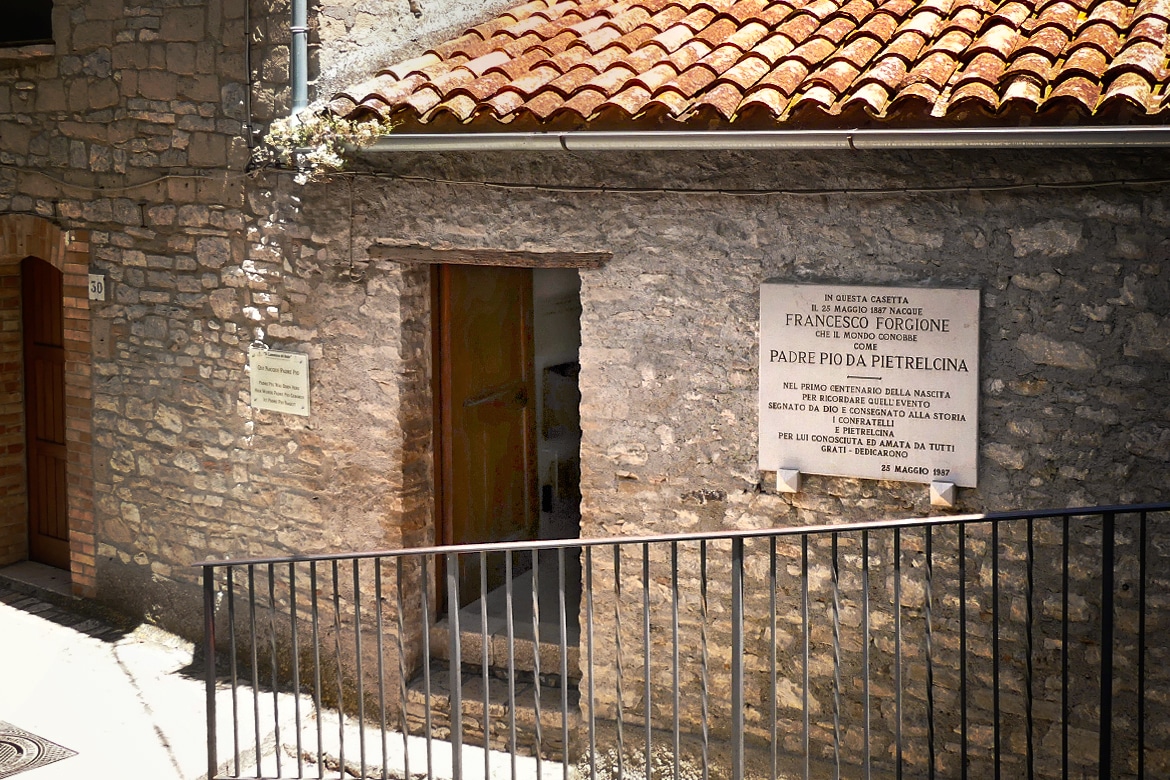Padre Pio was born in Pietrelcina, a small town near Benevento, Italy, in a modest home at 27 Vico Storto Valle. From an early age, he distinguished himself through his devotion to God, avoiding games and dedicating himself to prayer. His simple home became the setting for his first spiritual and mystical experiences. Francesco, obedient and devout, often practiced penance by sleeping on the floor with a stone as his pillow.
The Home Where Padre Pio Was Born
Padre Pio’s birthplace is located at Vico Storto Valle, number 27 (now renumbered as 32), in Pietrelcina, a small and picturesque village in southern Italy. This modest home, rich in symbolic value, consists of a single humble room, accessible by three external steps. It served as his parents’ bedroom, furnished with simple yet functional items: a double bed, a small table, a chest, and a washstand. These modest pieces formed the core of their basic living space. The room, defined by its extraordinary simplicity, is softly illuminated by a window that allows a calming, gentle light to enter. Beneath the floor lies a small multipurpose space, used both as a storage area and a stable for the family donkey. This area, accessible through a trapdoor in the floor or an external door, was an essential resource for the Forgione family.

The Rooms on Vico Storto Valle 28
At number 28 of the same alley, Grazio Forgione, Padre Pio’s father, rented two additional rooms: a kitchen with a hearth and a bedroom for the children, which was later converted into a dining room. The kitchen, with its door opening directly onto the street, was the heart of daily life. On long, cold winter evenings, the family would gather around the hearth, sharing stories about their hard work in the fields and reciting the rosary. Original tools from that era, such as terracotta containers, cooking pots, and a kerosene lamp, still remain, hanging on the walls or tucked into small niches, offering a glimpse into their simple and practical way of life.
The back room, overlooking the serene countryside leading to Piana Romana, was originally a bedroom for Francesco and his siblings but was later repurposed as a dining room. This space remained central to the family’s domestic life. In these cramped yet intimate surroundings, much of young Francesco’s early life unfolded. It was within these humble settings that Padre Pio experienced his first spiritual and supernatural encounters. Even as a child, he exhibited an extraordinary inclination toward penance and sacrifice, at times sleeping on the floor and using a stone as a pillow. These unassuming spaces, imbued with faith and devotion, still preserve the roots of the man who would become Padre Pio.






